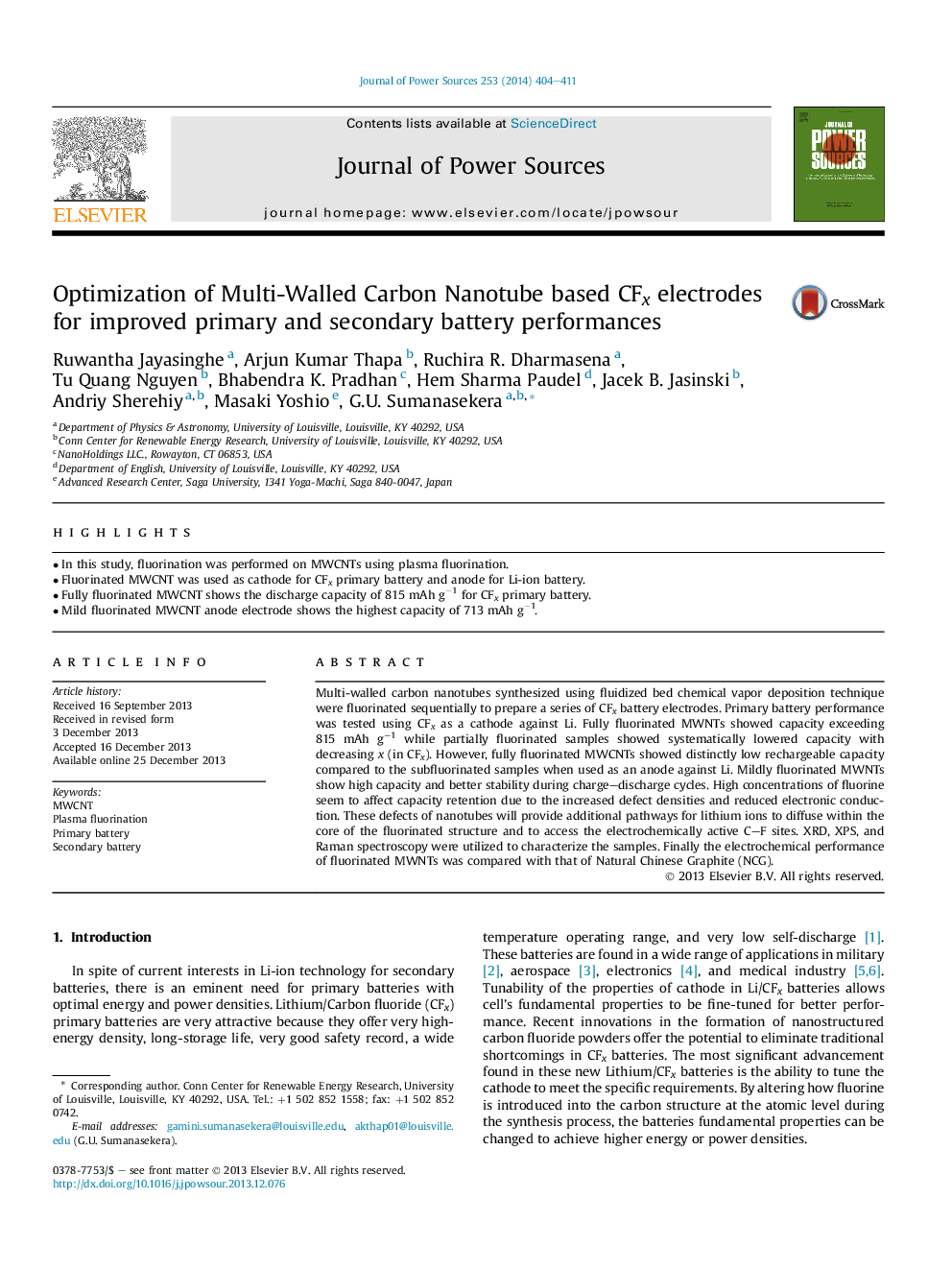| Article ID | Journal | Published Year | Pages | File Type |
|---|---|---|---|---|
| 1287099 | Journal of Power Sources | 2014 | 8 Pages |
•In this study, fluorination was performed on MWCNTs using plasma fluorination.•Fluorinated MWCNT was used as cathode for CFx primary battery and anode for Li-ion battery.•Fully fluorinated MWCNT shows the discharge capacity of 815 mAh g−1 for CFx primary battery.•Mild fluorinated MWCNT anode electrode shows the highest capacity of 713 mAh g−1.
Multi-walled carbon nanotubes synthesized using fluidized bed chemical vapor deposition technique were fluorinated sequentially to prepare a series of CFx battery electrodes. Primary battery performance was tested using CFx as a cathode against Li. Fully fluorinated MWNTs showed capacity exceeding 815 mAh g−1 while partially fluorinated samples showed systematically lowered capacity with decreasing x (in CFx). However, fully fluorinated MWCNTs showed distinctly low rechargeable capacity compared to the subfluorinated samples when used as an anode against Li. Mildly fluorinated MWNTs show high capacity and better stability during charge–discharge cycles. High concentrations of fluorine seem to affect capacity retention due to the increased defect densities and reduced electronic conduction. These defects of nanotubes will provide additional pathways for lithium ions to diffuse within the core of the fluorinated structure and to access the electrochemically active C–F sites. XRD, XPS, and Raman spectroscopy were utilized to characterize the samples. Finally the electrochemical performance of fluorinated MWNTs was compared with that of Natural Chinese Graphite (NCG).
